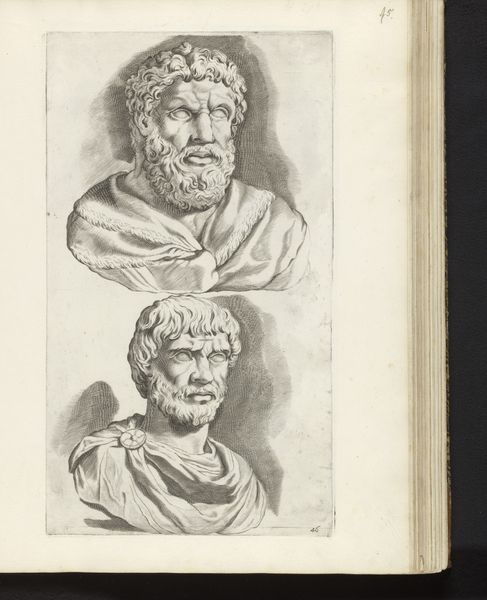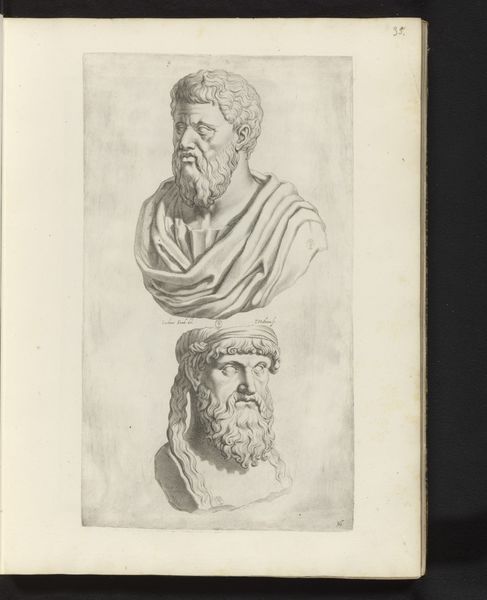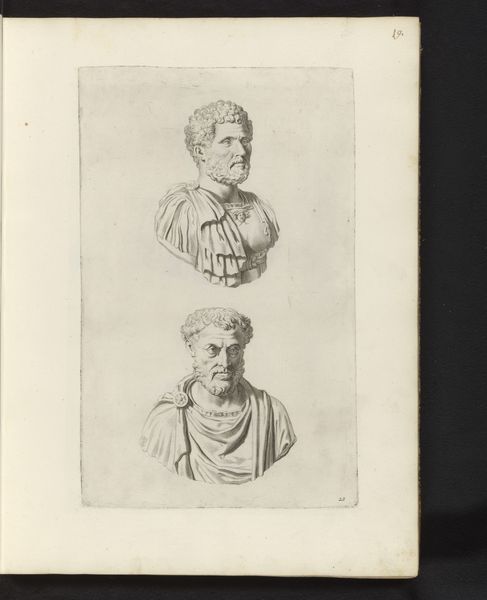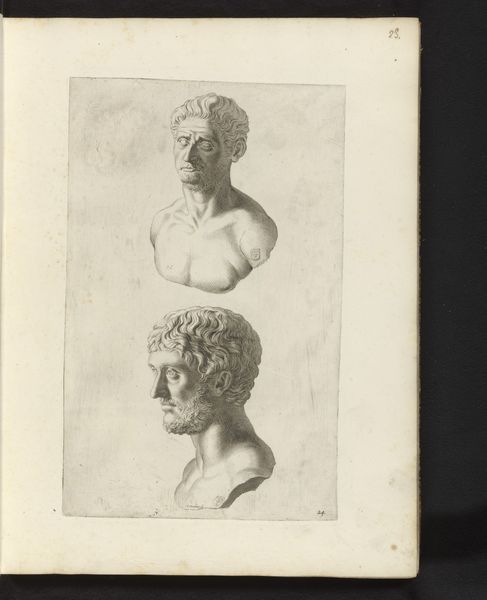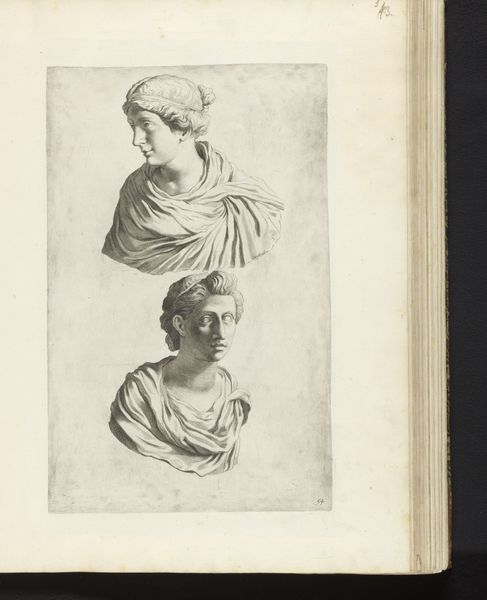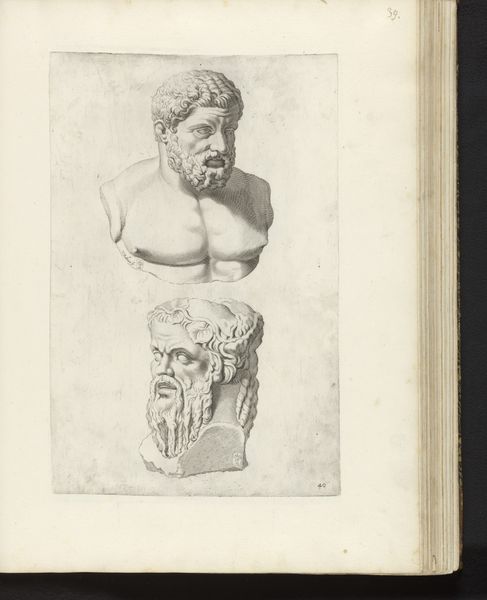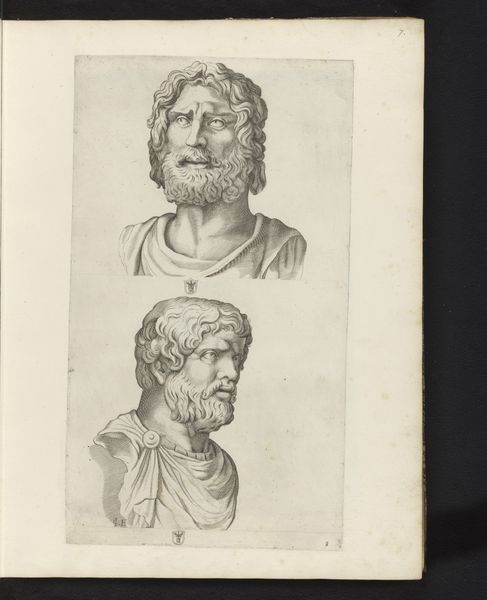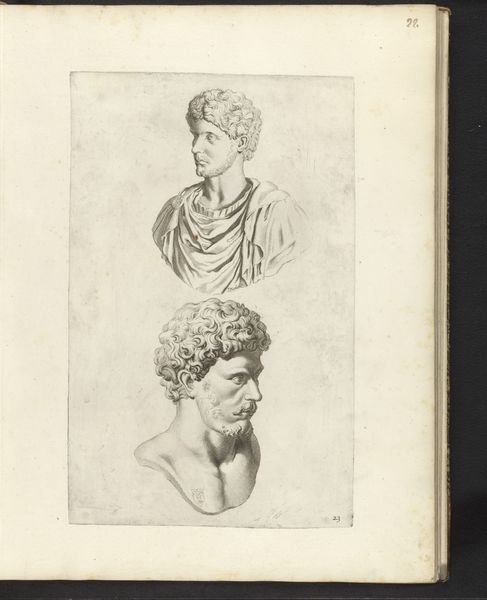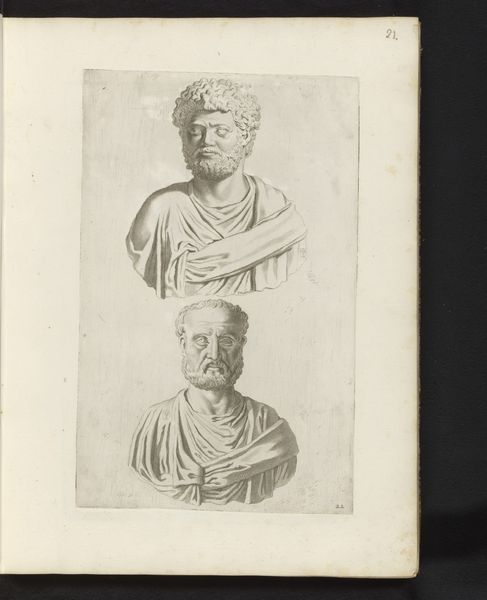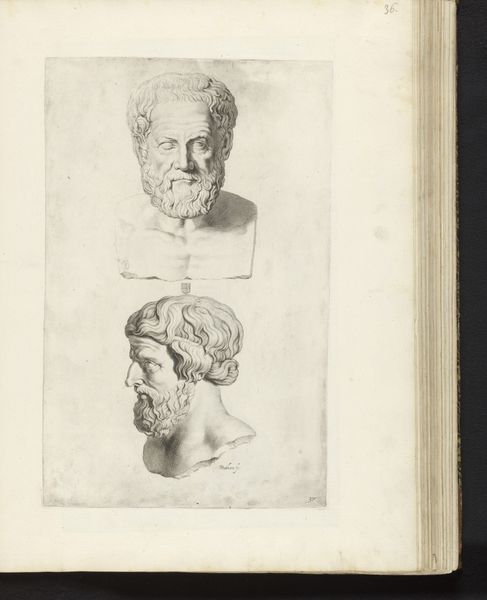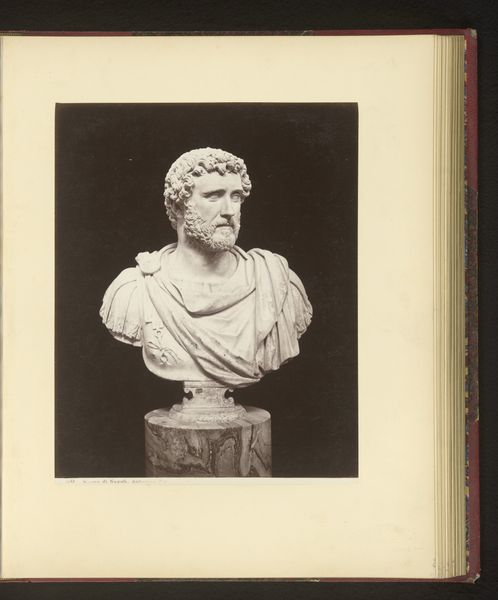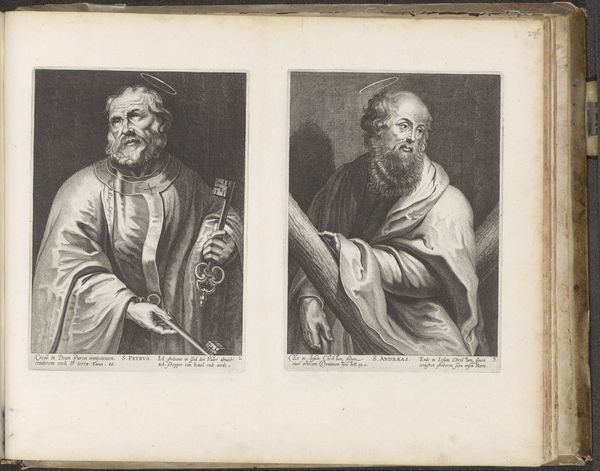
drawing, graphite
#
portrait
#
drawing
#
baroque
#
pencil sketch
#
classical-realism
#
figuration
#
form
#
pen-ink sketch
#
line
#
graphite
#
history-painting
#
academic-art
Dimensions: height 371 mm, width 236 mm
Copyright: Rijks Museum: Open Domain
Curator: Let's delve into this drawing by Theodor Matham, created between 1636 and 1647. It's titled "Bustes van Pindarus en Antoninus Pius," and we're fortunate to view it here at the Rijksmuseum. Editor: Two guys stacked on top of each other! I immediately get a 'passing the torch' vibe, like philosophy class mixed with really old statues I might see in a library or town hall. Sort of…official-looking, wouldn't you say? Curator: Precisely! We have Pindarus, the celebrated Greek lyric poet, and Antoninus Pius, a Roman Emperor known for his equitable reign. This juxtaposition invites contemplation on the enduring legacies of classical thought and governance, key themes in the 17th century amid shifting power dynamics and intellectual movements. Editor: Wow, okay, legacies. But purely visually, it is simple. Graphite on paper, the focus is all in those finely rendered details, especially their hair and beards, of course! There is just a gentle gradient in tones… What do you call that? Subtle tension, maybe? Curator: Indeed, Matham's choice of graphite lends itself beautifully to these subtle nuances. And the contrast in hairstyles--Pindarus with his shorter crop versus the Emperor's voluminous curls--highlights not just period aesthetics but differing societal roles and expressions of identity, perhaps. How are these men remembered and portrayed? Whose stories are amplified? These were salient concerns even then. Editor: The paper seems quite aged, doesn't it? That soft ivory background adds such an atmosphere… and those almost imperceptible grey shadings. It lends them, at least for me, a gentle feel. But it makes me think, too, about the privilege of remembrance. Curator: That's a crucial observation. This drawing reflects the enduring influence of the classical world on European intellectual and artistic traditions, and yet also the structures of power embedded in the selective canonization of certain figures over others. Who is written into the story matters profoundly. Editor: Absolutely. Thinking about how those stories echo even now gives this drawing an urgent dimension beyond just 'old guys looking stoic.' For me, at least. Curator: And so, we are left considering the intersection of individual accomplishment, historical representation, and the ongoing dialogues between past and present that this piece encapsulates so beautifully. Editor: Like… What conversations are *we* not depicting? Anyway, glad to have pondered some stone-cold dudes for a bit! Thanks.
Comments
No comments
Be the first to comment and join the conversation on the ultimate creative platform.
